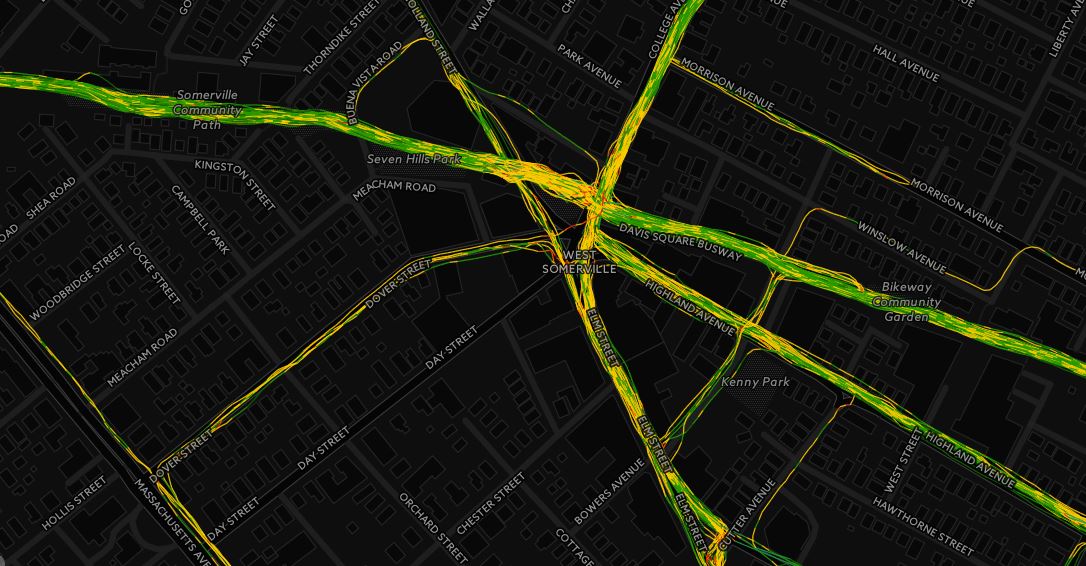Not too long ago, Bill Morris, posted the following tweet:
Iiiiiiinteresting . . . https://t.co/5j9Glo1gB6
— Bill Morris (@vtcraghead) September 25, 2015
Go read the blog post that Bill links to from Mapzen and then come back here.
I love OpenStreetMap. It’s the best. In my opinion, it’s the most important thing to have happened to the geo community since Dr. Tomlinson started working with map overlays in the 1960s*.
Geo-tech has rapidly grown and matured over the past two decades. Not long ago, most things GIS and geo-tech were reserved for governments (local to national) and academic institutions. Thankfully, that isn’t the case in today’s world. Geo-thinking and geo-tech is everywhere and OpenStreetMap is a major reason why.
But how has OpenStreetMap helped make location and geo so prevalent to a growing variety of industries and institutions outside of government and academia? Why is that story that Bill linked to so important? I think there are a few reason.
- OpenStreetMap has greatly expanded access to geo data worldwide – When OpenStreetMap started over ten years ago it was created as a response to limited geo data access, primarily in the UK. From those early days to now OpenStreetMap, and its many partners, have made access to both consuming and contributing data increasingly more easy and efficient – for anywhere in the world. Here in the US of A we have always had pretty great access to some level of geo-data, but that hasn’t always been the case in many other countries. Beyond opening up data resources, OpenStreetMap has also helped introduce spatial data to a wide audience, including many with very little knowledge of geo as perhaps you or I know it. That’s awesome.
- It is open (and flexible) – Some early detractors (including myself) were once worried about OpenStreetMap undercutting the “authoritative” and “established” (and for cost) data providers in the marketplace. I think there was an early worry about data quality and data trust. I believe that almost all of those worries are now gone. The fact that anyone with a web connection can view or edit the data makes it that much more powerful. And because it is open, I believe the people who contribute (many of whom are “pros”) take their adds and edits very seriously. I know I do. OpenStreetMap is also incredibly flexible. Even though the commercial data vendors have gotten much faster at incorporating updates (in general, governments are still slow), OpenStreetMap is known for its ultra-fast updates, primarily due to its dedicated community of contributors. That, to me, is one of its greatest advantages. The data is never old on OpenStreetMap.
- It is for the greater good – One of my favorite things about OpenStreetMap is its large and dedicated community. One of the best parts of this community has been HOT OSM, whose members help coordinate updates to OpenStreetMap to areas impacted by natural or humanitarian disasters. The data they develop in the hours and days after a major event (for a great example, look at their work following the 2010 Haiti earthquake ), especially in developing regions, is critical to many, including those on the ground aiding relief efforts. See also @TheMissingMaps project.
- It has enabled an emerging industry to grow – OpenStreetMap has forever changed the way we look at geo-data and the technology surrounding it. This change in perspective has helped foster a growing number of geo-enabled companies. Would companies like Boundless, CartoDB, Mapzen, Mapbox, or Mapkin be as successful if OpenStreetMap wasn’t around? Maybe. Maybe not. What about the success of the Leaflet API, or the growth of FOSS4G? Would they have been as important in the geo and tech worlds if it wasn’t for OpenStreetMap? Probably, as they are both awesome. However, I believe that because of OpenStreetMap and all that it provides and all that it stands for, that these types of organizations, ideas, and companies will continue start-up and contribute positively to our profession.
So, let’s go back to the beginning of the post. Why did I link the tweet from Bill about Mapzen’s latest efforts regarding Mapzen Search? Well, I think their work, along with many others, is proof of how valuable OpenStreetMap really is and will continue to be. The OpenStreetMap community is maturing and the industry surrounding it is expanding. We have only seen the tip of the proverbial iceberg when it comes to the potential of OpenStreetMap and what it can do. I look forward to being apart of what’s next.
You should too.
* sidenote, GPS came in a very close second
Honorable mentions for “Most Important thing in Geo” – GPS, QGIS, TIGER, ArcView 3.2, Landsat, Smartphones


